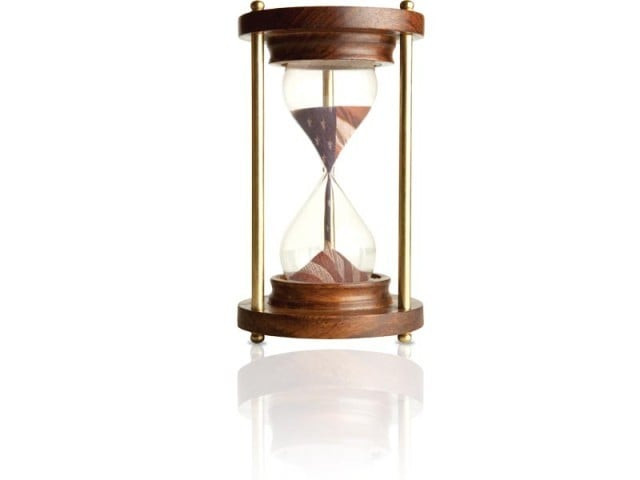US economy losing steam: Ratings agencies failed to see the signs
S&P is overly generous in ratings and fails to detect smoke in early stages.

The ramifications of this downgrade are not only considered historic but they are equally viewed as symbolic as it adds to the growing global consensus that the United States economy is running out of steam.
S&P’s track record includes rating subprime mortgage bonds AAA that turned sour into ‘toxic assets’. S&P repeated the blunder while rating the dinosaurian banks of Wall Street, Lehman Brothers and Bear Sterns, that became extinct overnight.
Despite its tainted credibility, two facts remain stubbornly evident – S&P is overly generous, rather than honest, when it comes to ratings, and that S&P has a problem with timing, failing to detect the smoke in its preliminary stages. I believe that both facts remain true with its current outlook on the US and global economy, that are slowly moving out of the eye of the storm back into the hurricane.
In my previous article, I provided an analysis of the FIRE economy (Wall Street or Finance, Real Estate and Insurance) that wields enormous political influence and how it has developed into an economic cancer. Its underlying premise, flawed and prone to crisis, is now being revived under the guise of Keynesian economics, in the process leaving the productive economy out in the rain and exacerbating the upcoming crisis.
Past and present financial fiascos
There are stark differences between the political and economic environments of the 1930s and the one prevalent after 2008. Keynesian principles worked in the 1930s because of full-time employment with the war-time economy, state deficit spending funneled into the productive economy (infrastructure, manufacturing, technology, energy and communications), applying the rule of law – imprisonment and penalising immoral financial practices and the dollar system was not as globally integrated.
Keynesian economics are bound to fail as none of the above conditions rhyme with the present predicament. Today, it is being applied in the following ways:
TARP programme ($700 billion) that transferred toxic assets from the financial sector onto the balance of the state (taxpayers), foreign and domestic bank bailouts ($20 trillion) – creating a moral hazard, money printing programmes known as quantitative easing ($2.1 trillion) and Operation Twist ($400 billion) are monetising US debt, debasing the dollar in the process and holding interest rates artificially low. This is only squeezing the middle class with a loss in purchasing power and diminishing the value of savings, at the expense of restarting borrowed consumption.
Each year the US breaches its debt ceiling at a record pace. Debt is rising faster relative to the growth of gross domestic product (GDP). In the last four years alone, national debt has risen by $6.1 trillion and has been accompanied by a $96 billion rise in real GDP.
An unsustainable trend has led to a ballooning $15.3 trillion national deficit (100.3% of GDP) and adding unfunded, foreign and private liabilities, aggregate debt amounts to 500% of GDP. Despite these figures, all efforts are being dedicated to reviving the status quo instead of pursuing alternative and sustainable economic models.
The writer is a freelance journalist and works for Muffathalle.
Published in The Express Tribune, February 20th, 2012.



















COMMENTS
Comments are moderated and generally will be posted if they are on-topic and not abusive.
For more information, please see our Comments FAQ